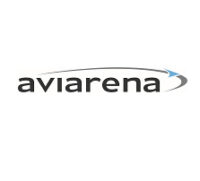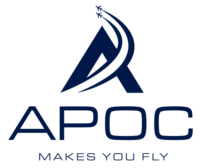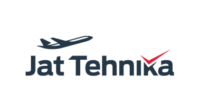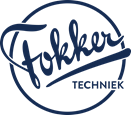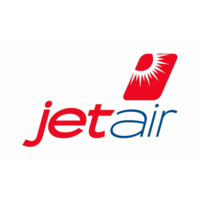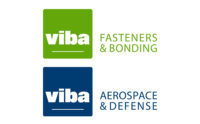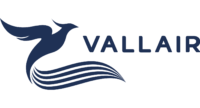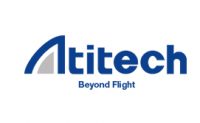Safety Management Systems (SMS)
This course introduces participants to the key tools to manage a performance-based SMS. Participants will become able to review, evaluate, build, or improve upon a safety management plan. The course details the safety management provisions and the implementation of a Safety Management System (SMS) at service provider level, respectively.
Course information
Course Description:
This course is developed with ICAO annex 19 and ICAO doc 9859 3rd Edition Safety Management Manual (SMM) as reference and is intended for personnel assigned to safety and safety-related positions in an aviation maintenance organisation or to those who would like a comprehensive review of SMS fundamentals.
Course Objectives:
The objective of this course is to obtain a suitable level of SMS related knowledge in order to become able to review, evaluate, build, or improve upon a safety management plan. For those from organizations that already have safety programs, the trainee will be able to critically review, compare and contrast, evaluate, and improve existing plans and programs from a safety management system perspective and make the required improvements.
Learning objectives:
This advanced E-training will provide you with the following skills:
- Learn how the process of risk management can increase the effectiveness of your accident prevention efforts.
- Being able to deal with management at all levels and how to promote a Safety Management System and subsequent safety programs, using the basic concepts of strategic planning.
- Being able to communicate effectively with and involve all levels of management in safety by understanding the benefits and need of a Safety Management System.
- Being able to involve all staff in safety, develop a positive safety culture, maintain a commitment to safety, and assess progress.
- Being able to evaluate your current safety program and identify gaps or deficiencies compared to a fully functioning Safety Management System.
This advanced E-training will provide you with the following attitude:
- Being aware of the Safety Management System principles and theories.
- Being aware of different cultures in the Safety Management System Environment.
- Having the willingness to take into account human and organizational factors, as you organize (or reorganize) for a Safety Management System.
Regulatory requirement compliance:
This course is developed with ICAO annex 19 and ICAO doc 9859 3rd Edition Safety Management Manual (SMM) as reference.
Prerequisites:
Students participating in this course should have a general understanding of safety concepts and programs in a Part-145 maintenance environment.
Course Topics
Part 1 – Safety Management
- Whats causes accidents
- The defenition and concept of Safety
- The definition of Safety Management Systems
- The basic Safety Management System requirements
- Management strategies for Safety Management
- Basic Safety Concepts
Part 2 – Hazards – Four Fundamentals
- Types of Hazards
- Identifying Hazards
- Analyzing Hazards
- Documenting Hazards
Part 3 – Safety Risks
- Defenition of Risk
- Five fundamentals of Risk Management
- Managing Safety Risks
Part 4 – Introducing SMS
- Why een organisation needs a Safety Management System
- How an SMS relates to what you are already doing
- The four components of SMS in your organisation
- Safety Policy and Objectives in a Safety Management System
- Safety Risk Management and the way to implement it
Part 5 – Safety Assurance and Promotion
- How to assure Safety
- Safety Reporting System
- Internal evaluations and audits
- Organizational Cultures
- Promoting Safety
Course Duration:
2 days (starting at 09:00 both days and ending at approximately 16:00).
Materials used
Required Materials:
We recommend that you purchase ICAO Annex 19 (latest edition here)
Supplemental Materials:
Bring along a notebook and pen if you require to make written notes.
Hardware and Software requirements
Hardware requirements:
A reliable computer with internet connection is necessary to complete the online training.
Software requirements:
There is no software deemed necessary for this training.
Browser information:
We recommend that you use Google Chrome during the course and online examination.
Instructor information
Instructor credentials:
Mr. Danny Goergen has over 15 years of experience in the aviation industry. After several years working as an aircraft mechanic, he graduated as Bachelor in Aviation Engineering and started as a process engineer in an EASA Part 145 approved component repair shop.
Within this organisation he had two EASA Form 4 positions as Technical Manager and Quality Assurance Manager. In this last position he developed himself as an internal trainer, providing training in EASA/FAA/CAAC Part 145 regulations, Human Factors and Company Processes an Procedures.
While working for this organization as a Quality Assurance Manager and qualified Human Factors trainer, he had the ambition to consult, support and provide training not only for his employer, but also to offer these services to other organizations in the aviation industry.
In October 2009, Danny Goergen founded Holland Aviation Consultancy & Engineering (HACE).
Besides providing consultancy and training services to the aviation industry, on behalf of HACE, he also founded an online training platform, that facilitates the several HACE online training courses, such as Human Factors, EWIS target group 1-6, Fuel Tank Safety and SMS Training.
Mr. Danny Goergen was, on behalf of HACE, contracted in several interim quality management positions. Two of his clients were Part 147 approved Aviation Competence Centre (ACC, AMC66), where he held the EASA form 4 position of Quality Assurance Manager. Besides managing the Part 147 quality system, he is also responsible for training their staff in EASA Part 66-147 regulations awareness and MTOE procedures.
Together with these Part 147 approved organisations, he develeped this SMS course.
Contact information:
Mr. Danny Goergen can be contacted via e-mail (danny.goergen@hace.aero)
Assessment and grading
Testing procedure:
Students will perform an (online) examination with Multiple-choice questions. A laptop or tablet with WiFi internet connection is needed to complete this examination.
Grading procedure:
This examination needs to be passed with a minimum passrate of 75% in order to receive a certificate of course completion.
Assignments and Participation
Assignments and Projects:
You are required to perform all the workshop assignments in order to complete this course.
Class Participation:
Students must communicate with other Students in the chatroom.
Students are expected to communicate with instructor as a learning resource.
Students are actively participating in discussions.
Course ground rules
Participation is required, expected to communicate with other students in team projects, learn how to navigate in the learning environment system, keep abreast of course announcements, use the student e-mail address opposed to a personal e-mail address. Address technical problems immediately and observe course netiquette at all times.


